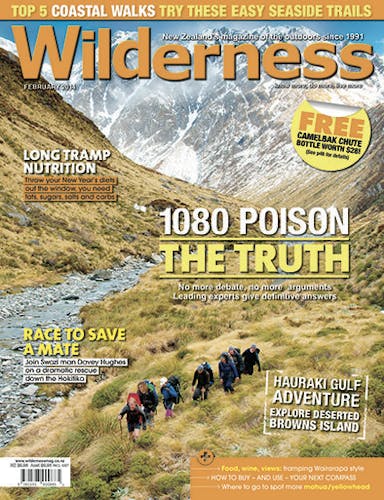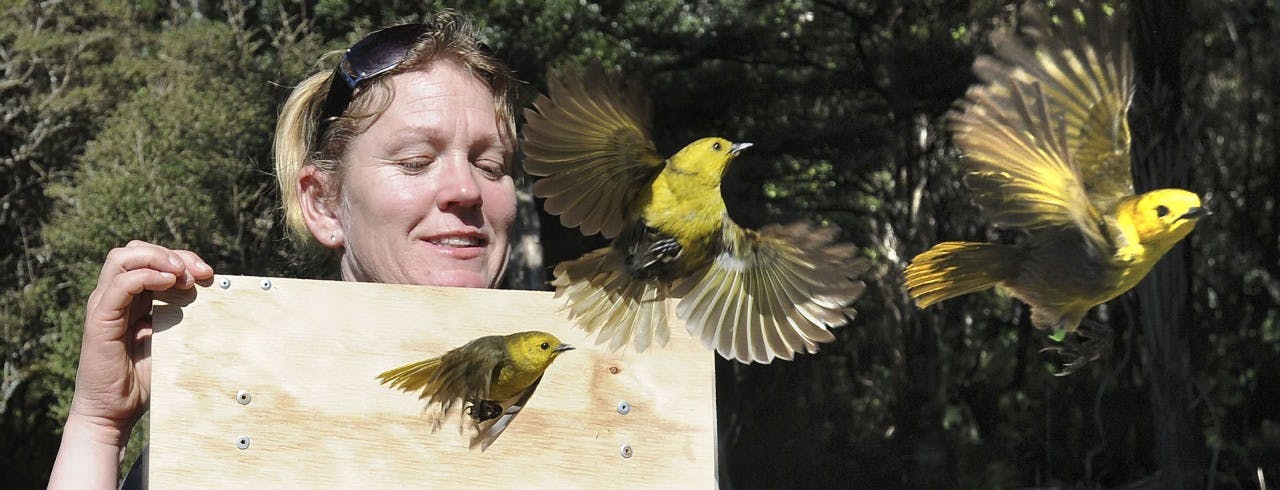Three places to see the rare mohua
Each year, New Zealand’s foremost conservation group, Forest and Bird, runs a ‘bird of the year’ competition where the public vote for their favourite native species. As well as raising awareness of various birds, the competition generates a lot of talk and fun, with several well-known New Zealanders lending their name to the cause. In 2012, comedian Raybon Kan won the title for the New Zealand falcon with his tagline ‘New Zealand’s got talons’. But in 2013 the tiny yellowhead (Mohoua ochrocephala), championed by Green Party co-leader Metiria Turei, won.
Mohua are insectivores that live in beech forests and stand out with their distinctive yellow head and breast. Sometimes called the New Zealand canary, the small passerines used to be among the most common of our bush birds, but now are much-reduced occupying less than 25 per cent of their former haunts. They belong to the endemic family of New Zealand creepers, which also includes the brown creeper, and closely related whitehead.
Sad to say, but the first time I heard a yellowhead was on a tape deck – one of the recordings made by John Kendrick back in the Wildlife Service days. Listening to the canned call did prepare me, however, for my first encounter with this diminutive bird on a 1998 tramping trip up the Young Valley in Mt Aspiring National Park with Rob Brown. After hearing the unusual chime, we dropped packs, pulled out cameras, and poised with telephoto lenses. Right on cue, a male bird alighted on a tree branch. Two cameras snapped. When we later saw our processed films, Rob’s was a perfect image of the bird while mine showed a pin-sharp branch but out-of-focus yellowhead. In that pre-digital era, slow film speeds used under such a dark canopy meant you only got one chance, and I’d muffed mine.
Encounters with yellowhead have become increasingly rare for trampers. Unlike their relatively more common North Island cousin, the whitehead, the South Island mohua has fared badly since humans brought pests, notably ship rats and stoats, to these shores. Because yellowhead nest in holes, adult females, as well as chicks and eggs, remain vulnerable to predation. As recently as 2002, predation by a rat plague wiped out the northernmost mohua population, at Mt Stokes in the Marlborough Sounds.
Happily, efforts by DOC and conservation groups have helped to halt their decline in several important locations. Observant trampers may spot yellowhead in the South Branch of the Hurunui (Lake Sumner Forest Park), the Caples and Dart Valleys (Mt Aspiring National Park), the Eglinton, Cleddau and Clinton valleys (Fiordland National Park), and the other three sites listed here.
– Shaun Barnett
Hawdon Valley, Arthur’s Pass National Park
Since DOC replaced Hawdon Hut in 2007, foot traffic up the valley has increased significantly. Efforts by DOC as part of their Operation Ark programme have reduced predator numbers in the area, helping the small local mohua population to survive.
Creswicke Flat, Landsborough Valley, West Coast
Nestled near the bushedge of Creswicke Flat is Fraser Hut, one of only two huts in the 60-kilometre-long Landsborough Valley. DOC has established trapping lines near the hut, ensuring the local mohua population has increased in recent years.
Catlins Forest Park, Otago
The forests of the Catlins hold one of the largest remnant populations of mohua, and work by DOC, the Mohua Charitable Trust and local iwi is ensuring the area remains one of the species’ strongholds. A recent mohua success story is the reintroduction of the species to Fiordland’s Resolution Island, using birds taken from both the Catlins and Landsborough populations. Mohua were present on the island during the time pioneer conservationist Richard Henry managed it during the early 1900s, but had since disappeared.








